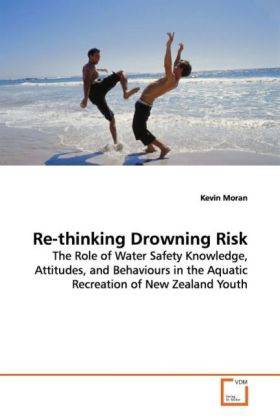
- Afhalen na 1 uur in een winkel met voorraad
- Gratis thuislevering in België vanaf € 30
- Ruim aanbod met 7 miljoen producten
- Afhalen na 1 uur in een winkel met voorraad
- Gratis thuislevering in België vanaf € 30
- Ruim aanbod met 7 miljoen producten
Zoeken
Re-thinking Drowning Risk
The Role of Water Safety Knowledge, Attitudes, and Behaviours in the Aquatic Recreation of New Zealand Youth
Kevin Moran
Paperback | Engels
€ 77,95
+ 155 punten
Omschrijving
The risk of drowning associated with aquatic recreation is the consequence of many underlying water safety influences that operate at intrapersonal, interpersonal and community levels. A nationwide survey was completed by New Zealand youth (n=2202, 15-19 year olds) to obtain comprehensive data on what young people know, think and do about their safety during aquatic recreation. Almost all respondents had taken part in some swimming (98%) in the previous year. Risk of drowning was exacerbated among many students because they had poor safety skills and knowledge, held unsound attitudes, and often reported risky behaviours. For example, many students estimated that they could not swim more than 100 m (54%), had swum outside surf patrol flags (61%) or never wore lifejackets (19%) during aquatic recreation. Taken separately, any of these dispositions is capable of heightening drowning risk; taken collectively they offer strong explanation as to why some youth are at greater risk of drowning than others. When analysed by gender, a lack of male water safety knowledge, a prevalence of unsafe attitudes, and at-risk behaviours was consistent and pronounced.
Specificaties
Betrokkenen
- Auteur(s):
- Uitgeverij:
Inhoud
- Aantal bladzijden:
- 220
- Taal:
- Engels
Eigenschappen
- Productcode (EAN):
- 9783639130034
- Verschijningsdatum:
- 24/02/2009
- Uitvoering:
- Paperback
- Formaat:
- Trade paperback (VS)
- Afmetingen:
- 152 mm x 229 mm
- Gewicht:
- 326 g

Alleen bij Standaard Boekhandel
+ 155 punten op je klantenkaart van Standaard Boekhandel
Beoordelingen
We publiceren alleen reviews die voldoen aan de voorwaarden voor reviews. Bekijk onze voorwaarden voor reviews.











